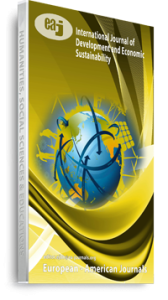This study empirically analyses the effects of natural capital on economic growth in Botswana using annual data from 1994 until 2016. In contrary to the existing literature, the study employed the mineral asset value as a proxy for natural capital deduced from the newly developed Mineral Accounts and Macroeconomic Indicators of Sustainable Development Frameworks. This proxy provides the inclusive wealth index of natural capital by taking into account the estimated economic value of minerals in the ground and their depletion overtime. The Autoregressive Lag Model (ARDL) employed indicates that mineral asset value used as a proxy for natural capital significantly and positively affect Botswana’s economic growth. Other determinants of growth used as regressors including human capital and foreign direct investment also have a similar effect on economic growth over the period under review. Despite government efforts to diversify the economy from minerals, the mining sector is still the backbone of the economy. The study, therefore recommends that the country should continue using its mineral revenues to diversify its assets portfolio to improve physical and human capital to achieve sustainable economic growth. The country should also adopt a new growth model where technology will be at the forefront of economic development.
Keywords: Autoregressive Distributive Lag model, Mineral Asset Value, Natural Capital, economic growth

